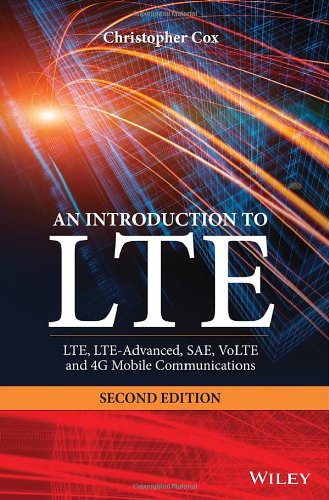
An Introduction to LTE, 2nd Edition
- Length: 488 pages
- Edition: 2
- Language: English
- Publisher: Wiley
- Publication Date: 2014-07-28
- ISBN-10: 1118818032
- ISBN-13: 9781118818039
- Sales Rank: #525604 (See Top 100 Books)
An Introduction to LTE: LTE, LTE-Advanced, SAE, VoLTE and 4G Mobile Communications
Following on from the successful first edition (March 2012), this book gives a clear explanation of what LTE does and how it works. The content is expressed at a systems level, offering readers the opportunity to grasp the key factors that make LTE the hot topic amongst vendors and operators across the globe. The book assumes no more than a basic knowledge of mobile telecommunication systems, and the reader is not expected to have any previous knowledge of the complex mathematical operations that underpin LTE.
This second edition introduces new material for the current state of the industry, such as the new features of LTE in Releases 11 and 12, notably coordinated multipoint transmission and proximity services; the main short- and long-term solutions for LTE voice calls, namely circuit switched fallback and the IP multimedia subsystem; and the evolution and current state of the LTE market. It also extends some of the material from the first edition, such as inter-operation with other technologies such as GSM, UMTS, wireless local area networks and cdma2000; additional features of LTE Advanced, notably heterogeneous networks and traffic offloading; data transport in the evolved packet core; coverage and capacity estimation for LTE; and a more rigorous treatment of modulation, demodulation and OFDMA. The author breaks down the system into logical blocks, by initially introducing the architecture of LTE, explaining the
techniques used for radio transmission and reception and the overall operation of the system, and concluding with more specialized topics such as LTE voice calls and the later releases of the specifications. This methodical approach enables readers to move on to tackle the specifications and the more advanced texts with confidence.
Table of Contents
Chapter 1 Introduction
Chapter 2 System Architecture Evolution
Chapter 3 Digital Wireless Communications
Chapter 4 Orthogonal Frequency Division Multiple Access
Chapter 5 Multiple Antenna Techniques
Chapter 6 Architecture of the LTE Air Interface
Chapter 7 Cell Acquisition
Chapter 8 Data Transmission and Reception
Chapter 9 Random Access
Chapter 10 Air Interface Layer 2
Chapter 11 Power-On and Power-Off Procedures
Chapter 12 Security Procedures
Chapter 13 Quality of Service, Policy and Charging
Chapter 14 Mobility Management
Chapter 15 Inter-operation with UMTS and GSM
Chapter 16 Inter-operation with Non-3GPP Technologies
Chapter 17 Self-Optimizing Networks
Chapter 18 Enhancements in Release 9
Chapter 19 LTE-Advanced and Release 10
Chapter 20 Releases 11 and 12
Chapter 21 Circuit Switched Fallback
Chapter 22 VoLTE and the IP Multimedia Subsystem
Chapter 23 Performance of LTE and LTE-Advanced







